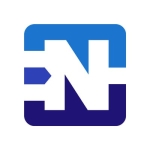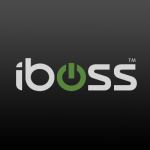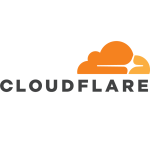What is most valuable?
Fortinet FortiGate is among the best firewall solutions, having a significant market share in Egypt. Fortinet FortiGate has a very simple configuration, is easy to set up, and includes SD-WAN features at no additional cost. I recommend Fortinet FortiGate to act as an internet or perimeter firewall.
Features such as URL filtering, intrusion detection, and threat prevention make it suitable as a perimeter firewall. It also includes free SD-WAN features. It is recommended when any customer has more than one site, as it can act as an SD-WAN solution without any extra licenses, with SD-WAN being a built-in feature. It is a very easy solution.
What needs improvement?
From my experience, I see that the datasheets of the Fortinet FortiGate portfolio need to be more accurate because correct sizing is essential. The datasheets should provide clear information when deploying features.
When comparing Fortinet to all other vendors, I believe most features are available in Fortinet. I'm not sure if the DNS security license is available in Fortinet; if not, it is important to add Fortinet DNS security and sandboxing licenses. I know Fortinet has a separate sandbox solution, but I am unsure about sandbox features in the firewall. In contrast, Palo Alto has a DNS security license, email security, and WildFire license that serves as a sandbox solution.
For how long have I used the solution?
I have been working with Fortinet FortiGate for around eight years.
What do I think about the stability of the solution?
I find Fortinet FortiGate to be very stable.
What do I think about the scalability of the solution?
The scalability of Fortinet FortiGate depends on the project. If the project meets accurate sizing, it can be scalable, but if the presales engineer does not accurately size it, Fortinet FortiGate can have limited resources to scale. It depends on the project.
How are customer service and support?
I evaluate Fortinet's technical support as a seven out of ten. They aren't the best support, but when we need assistance with any features or field activities, we can utilize the internal support team of the vendor located in our country.
How would you rate customer service and support?
What was our ROI?
I believe it is cost-effective. With Fortinet FortiGate, we can pay once for every renewal period, and there are no CAPEX expenses because Fortinet FortiGate is easy to configure, easy to manage, and familiar to most engineers.
What's my experience with pricing, setup cost, and licensing?
It is not the cheapest one, but its price is very competitive.
Which other solutions did I evaluate?
When comparing Fortinet FortiGate to Palo Alto or other firewalls I've worked with, Fortinet is more stable, easy to configure, easy to manage, and is competitive in price.
Fortinet offers multiple product sizes suitable for various enterprises, including small, medium, and enterprise customers. Compared to Palo Alto, Fortinet offers a free SD-WAN feature while Palo Alto requires an SD-WAN license with more costs and several licenses. However, Palo Alto does offer more advanced features than Fortinet. A notable difference is that when the Fortinet FortiGate license expires, the box still works until the customer renews the license, while with Palo Alto, the box stops entirely and the customer must renew the license to continue functioning.
What other advice do I have?
My experience in integrating SD-WAN capabilities with Fortinet FortiGate in the network shows that the integration is very simple and has a straightforward configuration.
The Fortinet SD-WAN solution consists of multiple products. To create or set up a full SD-WAN solution, it needs two products from Fortinet: FortiGate and FortiManager, which is a centralized management solution, and FortiAnalyzer, which is a log management solution. SD-WAN connects more than one site. It centralizes management and logs. Fortinet FortiGate with SD-WAN does not require any extra license, but to have the full SD-WAN solution, it is required to have FortiManager and FortiAnalyzer for several reasons. Fortinet products can be VM or hardware.
I have worked with the hardware-assisted DDoS protection in the Fortinet FortiGate, and I think it's good.
I recommend the Fortinet FortiGate when acting as a perimeter firewall, and some customers use it in the data center. I recommend another vendor in the data center, but our customers are very satisfied with Fortinet FortiGate when acting as a data center firewall.
I have limited experience with the AI and machine learning enhanced FortiGuard services, but I know that Fortinet is leading this trend.
Fortinet FortiGate provides SD-WAN and SASE solutions to secure any type of user and any type of traffic. It has many features, including a secure web gateway and secure service edge, helping users access the internet and applications, whether inside or outside.
I would rate Fortinet FortiGate an eight out of ten.
Which deployment model are you using for this solution?
On-premises
Disclosure: My company has a business relationship with this vendor other than being a customer. Integrator



















